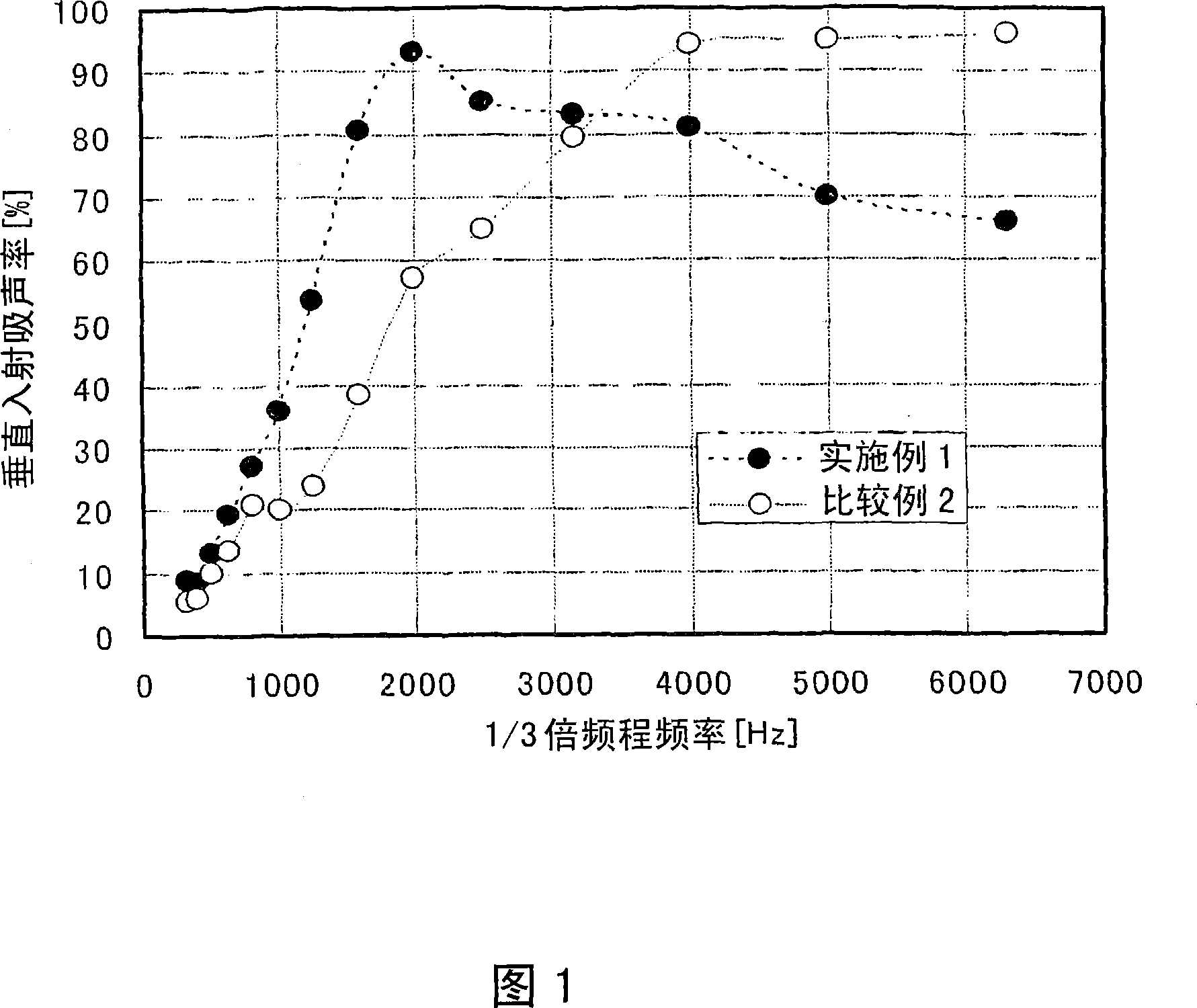Acoustic insulation
A heat-insulating and sound-absorbing technology, used in sound-generating equipment, building components, lamination, etc., can solve the problems of lack of enrichment, limited use, and inability to follow the deformation of sound-absorbing materials, and achieve thin and lightweight shape stability and comfort. Improved, superior thermal efficiency
- Summary
- Abstract
- Description
- Claims
- Application Information
AI Technical Summary
Problems solved by technology
Method used
Image
Examples
Embodiment 1
[0054] With an average fiber diameter of 14 microns and a weight per unit area of 30 g / m 2 Polypropylene resin (melting point: about 170° C.) was extruded and laminated on a spunbonded nonwoven fabric made of polyester (Excure 6301A manufactured by Toyobo Co., Ltd.) to form a film layer of 20 μm. A weight per unit area of 200 g / m comprising 30% by weight of short fibers with an average fiber diameter of 14 microns, a fiber length of 51 mm, and a crimp number of 12 / inch 2 , 10mm thick thermally fused fibers, polyethylene terephthalate thermally bonded staple fibers are overlapped, and a needle punching method with a needle punching density of 50 holes / cm was implemented using 40 needles. 2 1. After composite processing with a needle depth of 10mm, integration is performed by thermal bonding at a temperature 30°C higher than the temperature of the fusion fiber. Fraser type air permeability is 6cm 3 / cm 2 ·Second. The sound absorption rate is shown in Figure 1. The peak ...
Embodiment 2
[0056] The film of Example 1 was changed to a 50-micron film (melting point of about 263° C.) made of polyethylene terephthalate deposited with aluminum, and compounded by needle punching. conditions to make sound-absorbing and heat-insulating materials. Fraser type air permeability is 6cm 0 / cm 2 ·Second. The peak frequency is 2000Hz, the sound absorption rate is 91%, and the sound absorption rates at 1000Hz and 4000Hz are 39% and 68%, respectively. The heat retention rate is also 83%, which is good.
PUM
| Property | Measurement | Unit |
|---|---|---|
| thickness | aaaaa | aaaaa |
| melting point | aaaaa | aaaaa |
| diameter | aaaaa | aaaaa |
Abstract
Description
Claims
Application Information
 Login to View More
Login to View More - R&D
- Intellectual Property
- Life Sciences
- Materials
- Tech Scout
- Unparalleled Data Quality
- Higher Quality Content
- 60% Fewer Hallucinations
Browse by: Latest US Patents, China's latest patents, Technical Efficacy Thesaurus, Application Domain, Technology Topic, Popular Technical Reports.
© 2025 PatSnap. All rights reserved.Legal|Privacy policy|Modern Slavery Act Transparency Statement|Sitemap|About US| Contact US: help@patsnap.com

